Catching Your First Wave: A Beginner’s Guide to Surfing
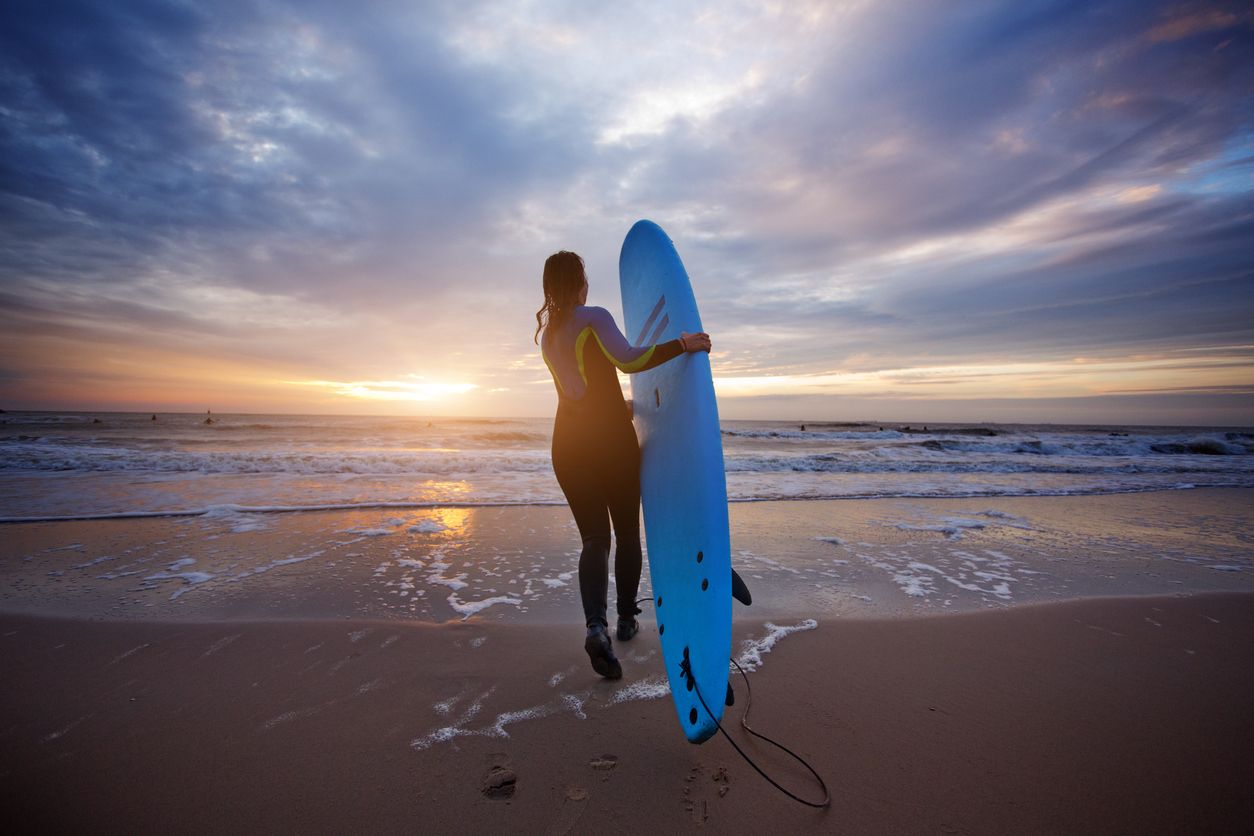
Have you ever heard anyone say they regretted taking up surfing? That they wished they’d never felt the sheer joy of catching that first wave?
We didn’t think so.
If we’re honest, learning to surf is secretly on many of our bucket lists, right between hiking to Everest Base Camp and making our own pasta.
So, if we’re all so keen to carve it up, what are we waiting for?
While surfing looks like a whole lot of super-chilled, gnarly fun, getting started can actually be just a little bit daunting. Ok, a lot daunting. We’ve all seen Point Break. We know how it works.
If you didn’t start when you were knee-high to a grasshopper, you might feel like you’ve missed the wave, so to speak.
But the truth is, anytime is a good time to start surfing.
To help you get started, we’ve put together our top surfing tips for beginners to help you feel a little more at home when you head out to the break:
1 Choose the Right Beginner Surfboard
First things first, what kind of board should you choose for your first surf session? Ultimately, you could learn to surf on any board, but some offer a much sharper learning curve than others. Your choice of board could be the difference between getting up and getting hooked or wiping out and giving up.
A soft board, like the ones used by the surf schools in holiday hotspots, is the perfect choice for your first wave-catching adventure. Made of soft foam without the hard fibreglass or epoxy coating of a traditional surfboard, these boards offer a gentle initiation into the world of surfing.
Otherwise known as a foamie, a softboard is wider, thicker and more buoyant than a traditional hard board, making it easier to stand up on and, most importantly, stay up on.
Softboards are also a safer option as they won’t do as much damage to you or your neighbouring surfers when (not if) you wipe out.
For an adult, an 8ft softboard is ideal, while for a child, a 6ft softboard is a large enough to be easy to stand up on but small enough to be manageable.
Today’s foamies have come a long way and are no longer just the domain of beginners. Even advanced surfers are turning to custom softboards for fun days in smaller surf.
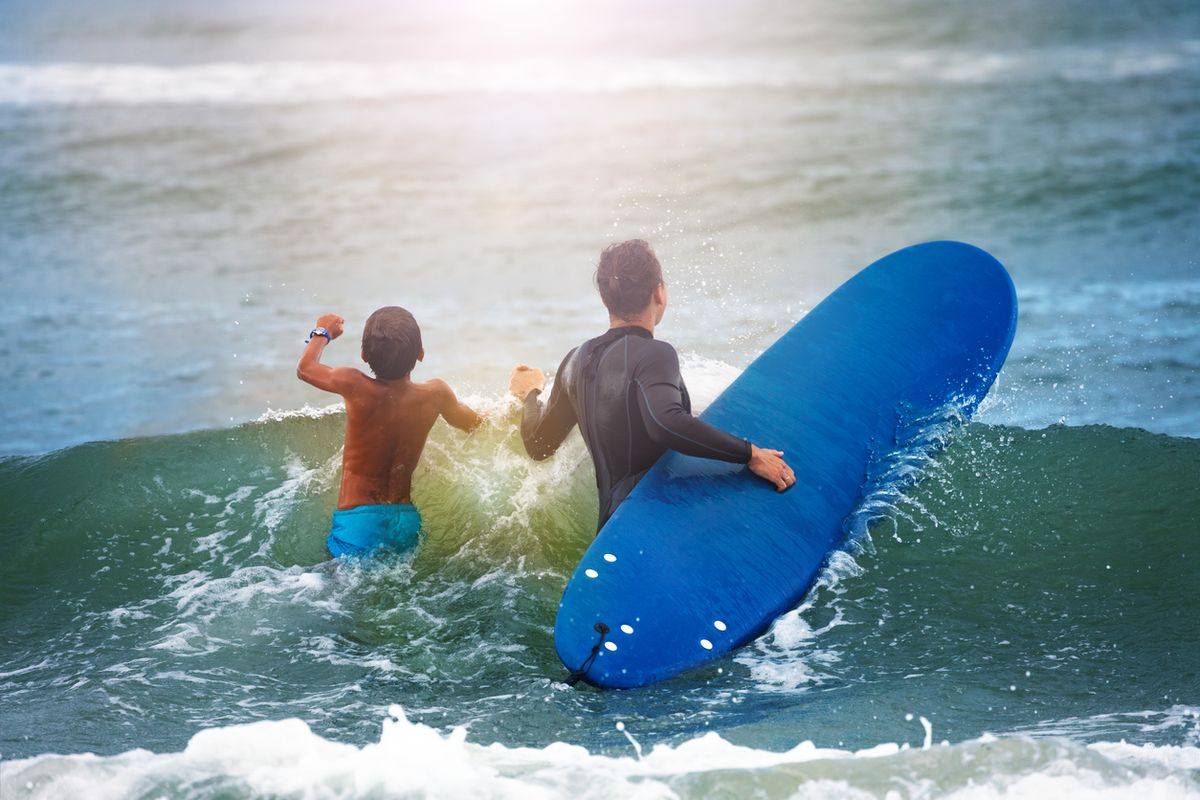
A foam surfboard is a great choice for beginners young and old.
2. Where to Catch Your First Wave
Just like choosing the right surfboard, choosing the right location will have a big impact on how successful your first surfing adventure will be.
On the Sunshine Coast, Noosa offers the cream of the surf crop.
First Point is at the National Park end of Noosa’s Main Beach, right at the end of Hastings Street. This is the first stop for local longboarders and those chasing the dream. Known for its small, protected surf and long, sweet rides, this spot gives newbies all the time in the world to get up and enjoy their first ride.
Little Cove, just around the headland from Noosa’s Main Beach, is another epic learn-to-surf spot. You can take the scenic walking track around to this stunningly beautiful cove from Hastings Street, or you can try your luck for a car park closer to Little Cove.
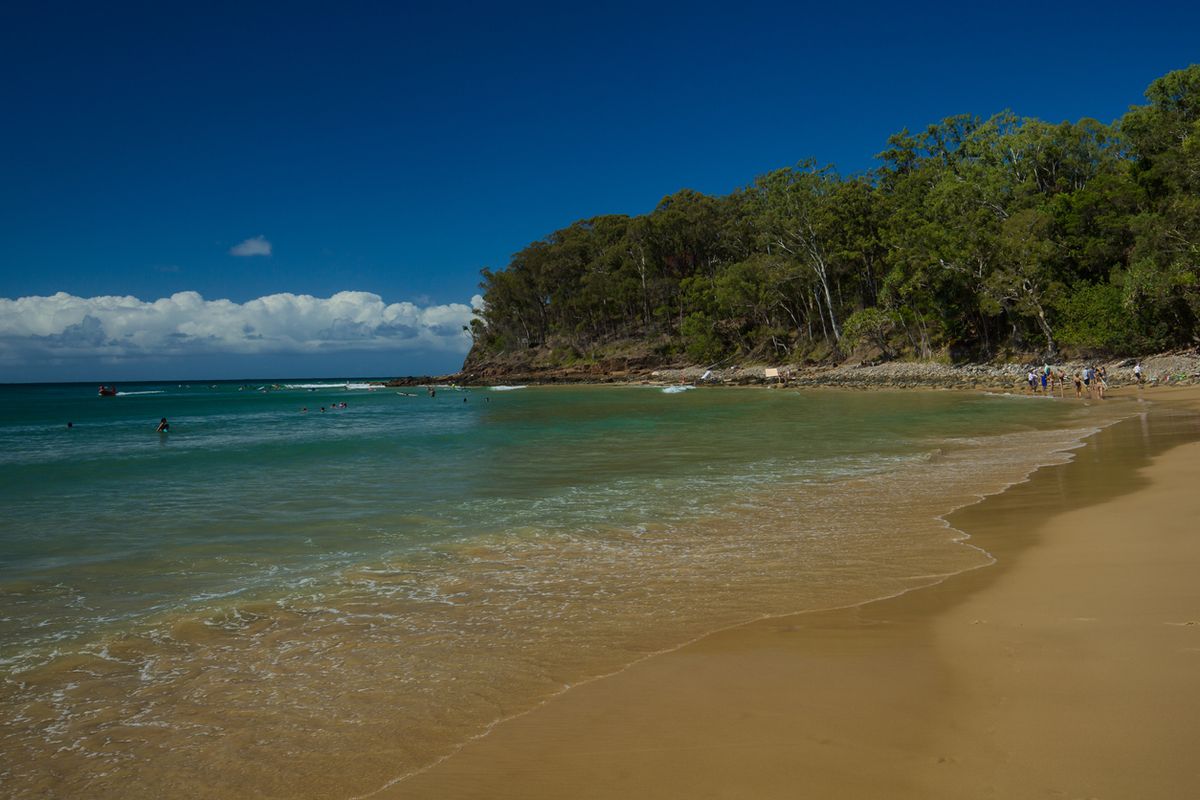
Little Cove at Noosa is a magic spot to catch your first wave
You can sign up for a learn to surf lesson here, or head down to the Rock Wall, at the Noosa Woods end of Hastings Street, to find the Go Ride a Wave Surf School and boards to hire.
At the Southern end of the Sunshine Coast, Caloundra offers some well-protected spots for beginners to gain some confidence. Dicky Beach, Happy Valley or Currimundi can all be great depending on wind and tide conditions. Hit up the experts at Caloundra Surf School for a lesson and you’ll be surfing the best, most protected break on any given day.
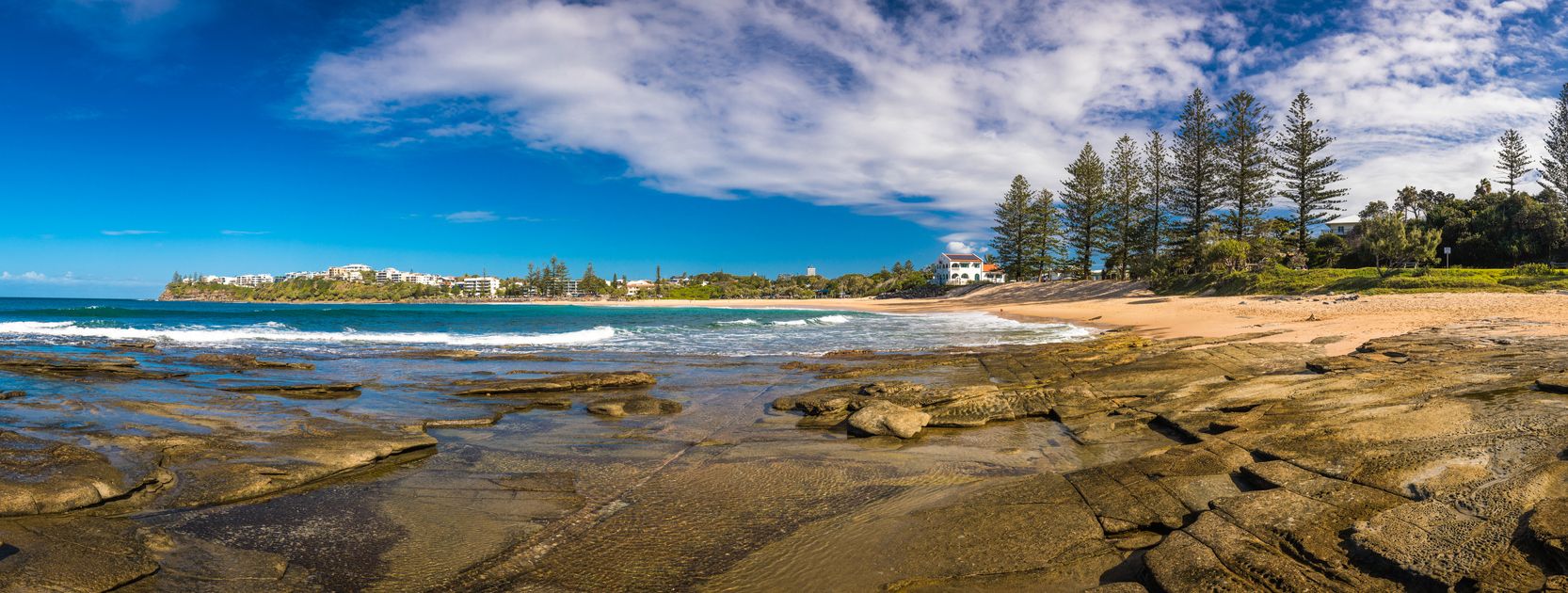
Caloundra’s Dicky Beach
Between Noosa and Caloundra there are dozens of other spots where you can catch a wave. Generally, while you’re learning, keep clear of the busiest breaks and find a clear spot where you’ve got small waves and space to have a crack and wipe out without affecting anyone else’s session.
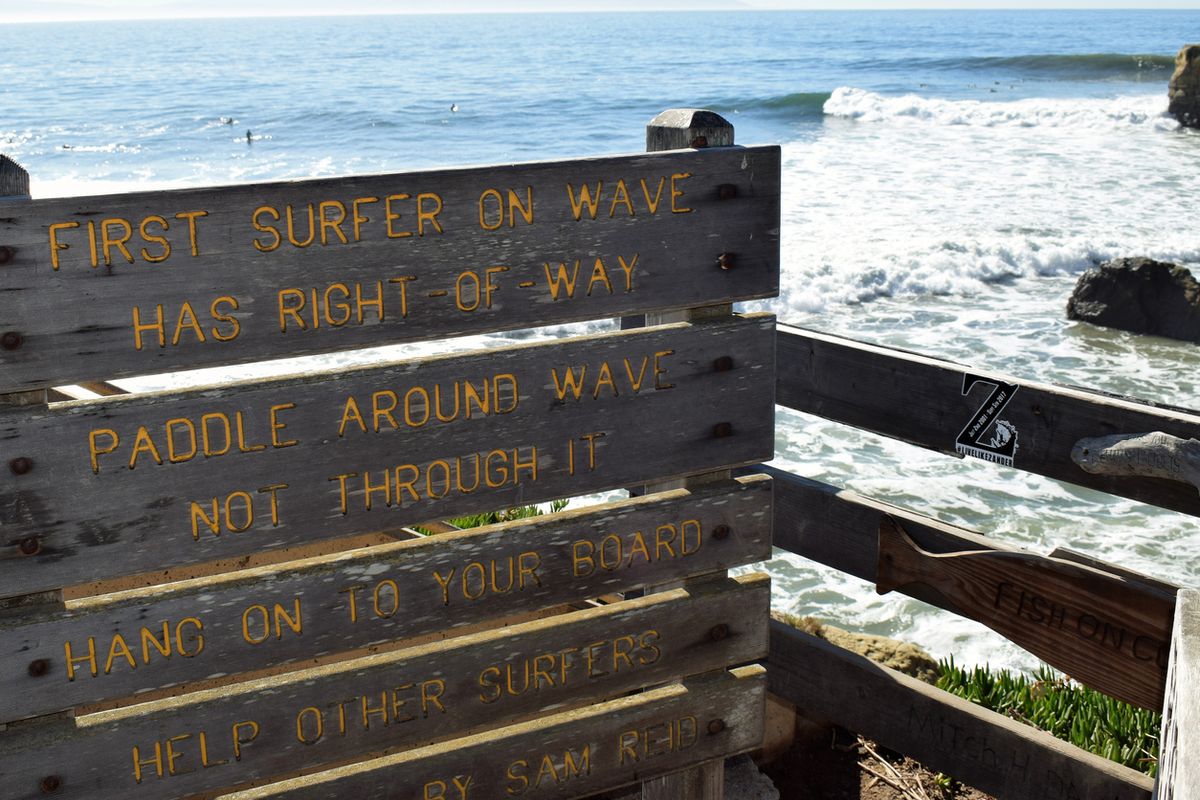
For the uninitiated, it’s worth understanding the basic rules of surfing so that you can stay on the right side of the locals, literally.
4. Know the Rules
For a pastime that is so free and cruisy, there are a surprising amount of do’s and don’ts to follow. Mostly, though, they really are common sense and purely intended to ensure that everyone surfing the break stays safe and takes their turn.
For the uninitiated, it’s worth understanding these basic rules of surfing so that you can stay on the right side of the locals, literally:
Give right of way
The surfer closes to the ‘peak’ (the high point where the wave starts to break) has right of way (otherwise known as ‘priority’) to ride the wave. When you’re the surfer closest to the peak, it’s your turn to go.
Don’t drop-in
If a surfer has caught a wave and has right of way, don’t take off on the same wave in front of them, effectively cutting them off. It’s not only dangerous, but also kinda rude.
This mistake is often made by newbie surfers and can be really annoying for experienced surfers who are following the rules and trying to enjoy their session. If you do unintentionally drop in on another surfer, learn from the experience and most importantly, say sorry. Admitting your mistake will go a long way toward earning their respect.
Understand the line up
The ‘line up’ is the line along which the wave breaks, also known as the ‘take-off zone’. It’s a way of ensuring that each surfer takes their turn and everyone gets a share of the waves on offer. When you’re paddling out, make sure you paddle to the end of the line
Don’t snake
This is when a surfer paddles around the back of another surfer so that they can position themselves to get the right of way for a wave. This manoeuvre is essentially cutting in line and really not cool.
Don’t ditch your board
Letting go of your board so you can dive under a wave can be really dangerous, especially if you’re surfing at a crowded break. It’s important to try to stay in control of your board at all times or run the risk of your board knocking into another surfer or at worst, cracking them in the head. If you don’t feel confident that you can do this, make sure you are surfing well away from other surfers while you’re working on your skills.
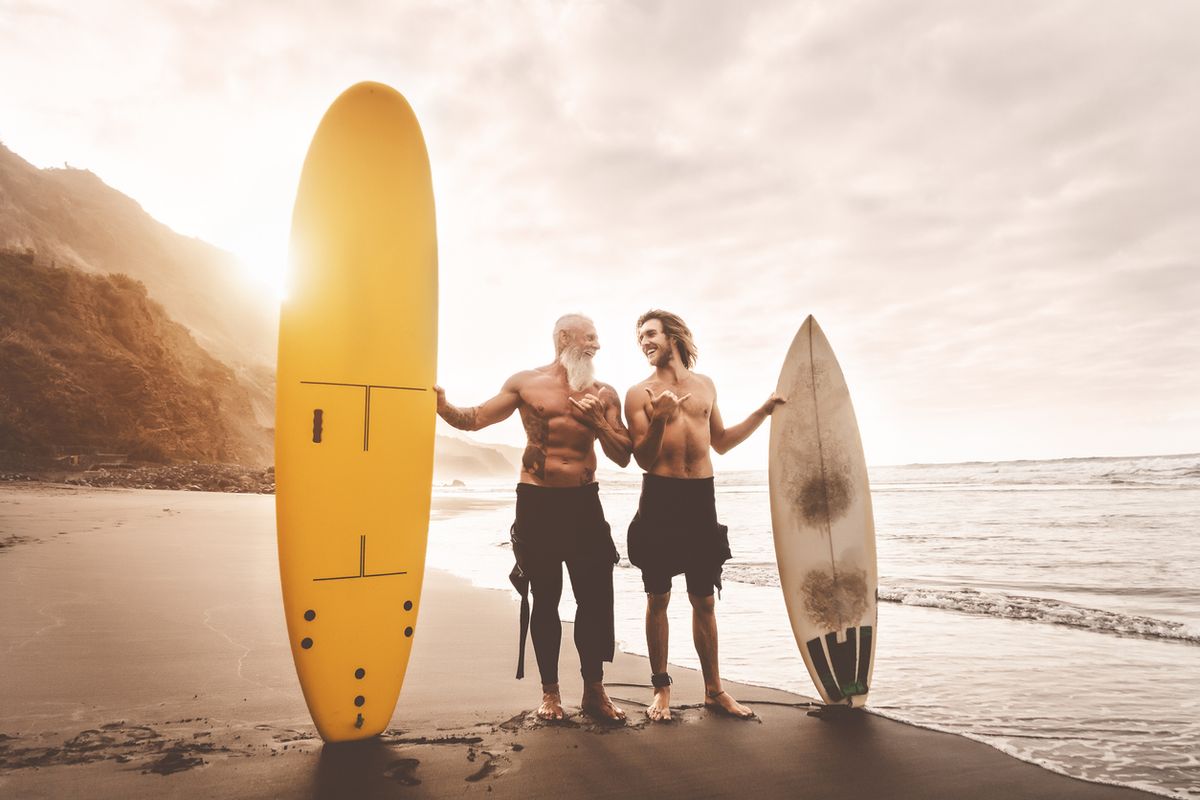
What’s your next ride? The classic longboard and shortboard each have their pros and cons
5. What’s Your Next Ride?
Once you feel like you, or your groms, have mastered the foamie and you’re ready to move onto a more challenging ride, what next?
From short boards to long boards and everything in between, there is a smorgasbord of surfboards out there, each designed for different surf conditions and surfing styles. And all of them have their own pros and cons.
Matching the right board to suit the surf conditions and your surfing style will ensure you get the most out of your time in the water and help you develop a lifelong love of surfing.
Longboard
Typically over 9 feet in length, Longboards (or Malibus) are the perfect boards for a long, smooth ride on small, clean surf.
Endeavour Foundation is giving away two classic longboards valued at $1398 with their Miami inspired Prize Home at Aroona, just 6 minutes from Caloundra’s beautiful Dicky Beach.
Mini Mal
A smaller version of the classic longboard, this mid-sized, stable board is a great all-rounder and the perfect next ride when you graduate from a foamie.
Shortboard
These fast, responsive, agile boards typically range from around five to seven feet long. They have an upturned tip (known as a nose rocker) and generally have two to four fins. In the hands of an experienced surfer a shortboard is ideal for carving up a wave, enabling pro surfers to do amazing surfing tricks and manoeuvres.
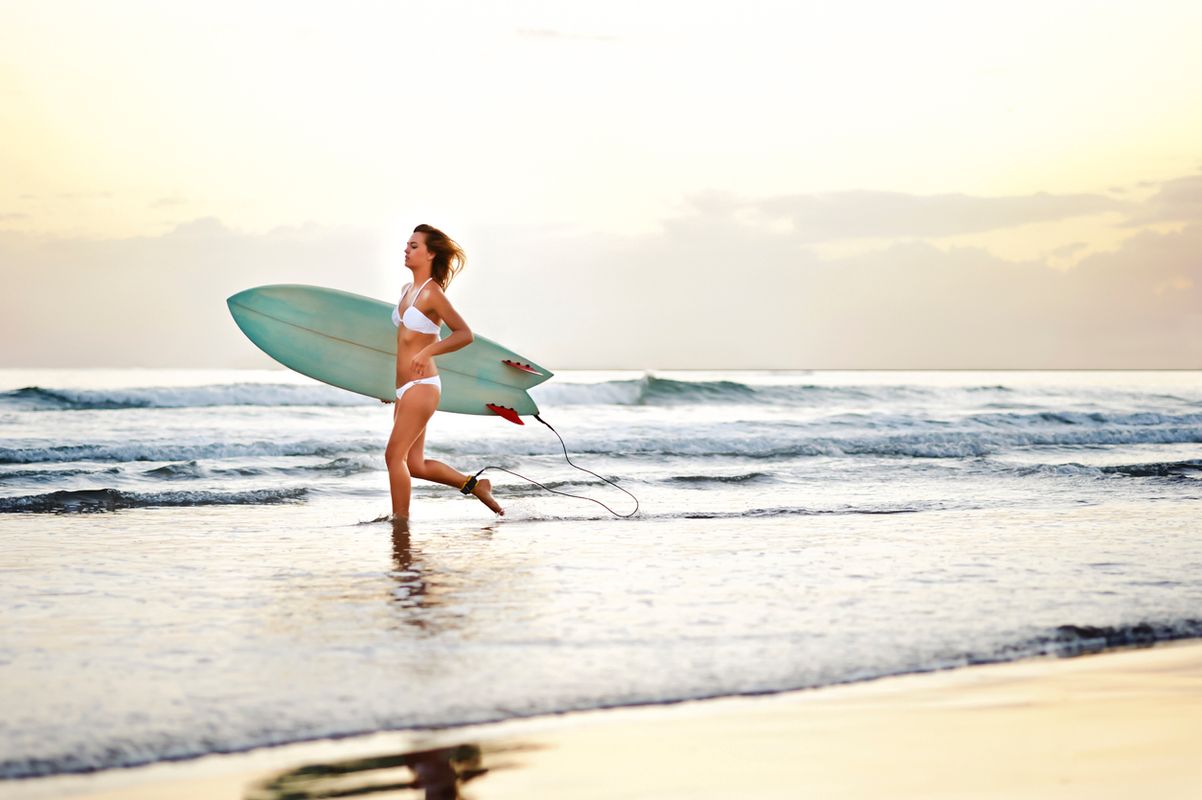
A Fish surfboard is perfect for small-to-medium waves.
The Fish
These nippy little boards owe their name to their fish-inspired tail design. These specialist shortboards are designed for speed in small-to-medium waves. A standard fish surfboard is wider, and usually a foot or two shorter than your typical shortboard. Fish boards are great for beginners new to shortboards and for more experienced surfers looking to carve it up on smaller waves. While often thought of as a fun board to ride, they are also a serious weapon in the hands of a master. Legendary Aussie surfer Mark Richards won four world titles between 1979 and 1983 on a twin fin fish.
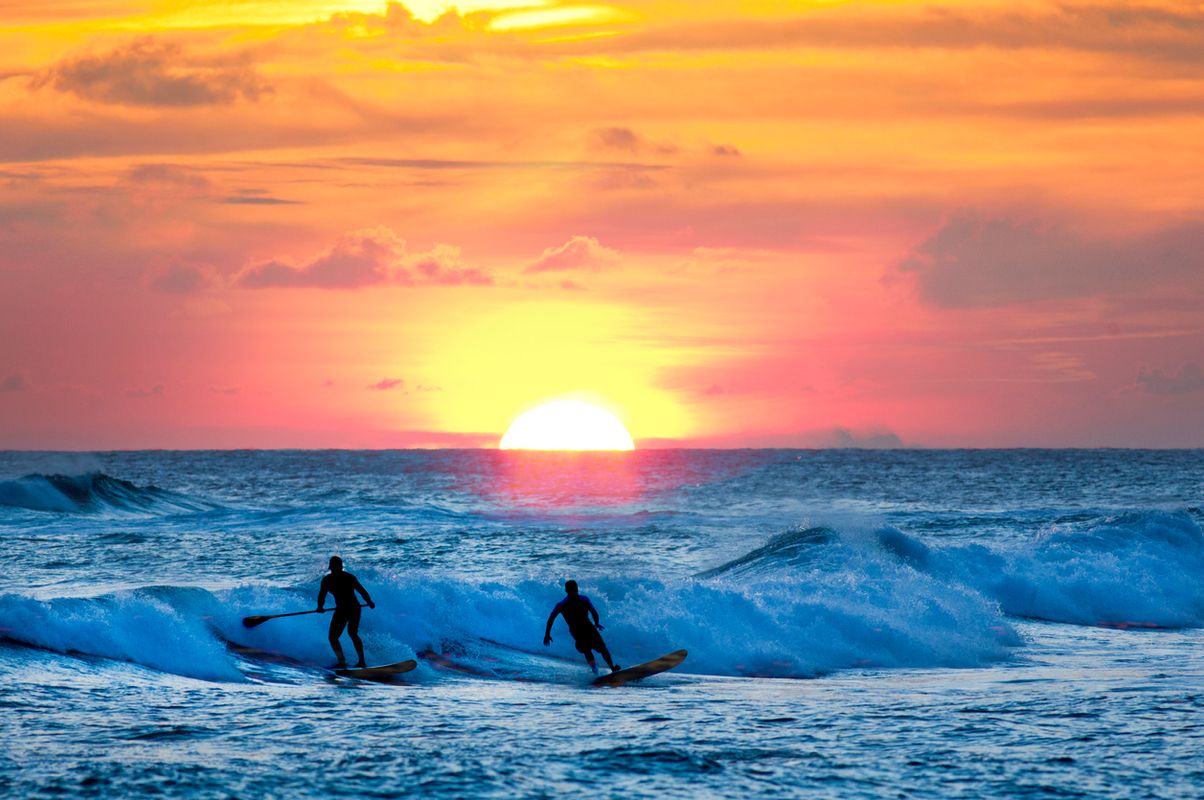
Stand up paddle surfing, Hawaii style.
Stand-Up Paddleboard (SUP)
Now some may think it’s a bit of a stretch to include SUPs in a surfboard wrap up, especially given most Aussie SUPers spend most of their time paddling flat water like rivers and estuaries. Stand-up paddle surfing has roots in Hawaii where surfers used a paddle to manoeuvre their boards out to the break and steer them on the waves.
So, for a truly authentic surfing experience, get your hands on an SUP (if you don’t have one already) and trade the flat water for some gentle surf. Paddling onto a couple of waves and your surfing journey will have already begun.

We would love to hear from you
How was your experience? Let us know what you think!
1800 63 40 40
Endeavour Foundation Lotteries operates in AEST. All times are displayed in your device's local time zone, unless stated otherwise.

